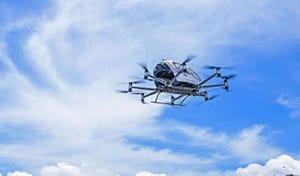Soft Robotic Wearable Aids Mobility for Parkinson’s Sufferers
The device uses actuators and sensors to collect data on a user’s gait and predict when a ‘freezing’ episode is about to occur
.png?width=1280&auto=webp&quality=95&format=jpg&disable=upscale)
Researchers have created a soft wearable robot to help people suffering from Parkinson’s gain increased mobility, helping them walk without “freezing.”
The team, from Harvard University’s John A. Paulson School of Engineering and Applied Sciences (SEAS) and the Boston University Sargent College of Health & Rehabilitation Sciences, created the robotic device to support a wearer’s hips and help them achieve a longer stride.
Freezing is a symptom of Parkinson’s disease when an individual loses the ability to move their feet mid-stride, often leading to a fall.
In tests the device eliminated participants’ freezing while walking indoors, allowing them to walk faster and further than they could without the garment’s help, the team said.
The wearable device is fitted with cable-driven actuators and sensors worn around the waist and thighs, which collect data on a user’s gait to predict when a freezing episode is about to occur and offer preventative support.
“We found that just a small amount of mechanical assistance from our soft robotic apparel delivered instantaneous effects and consistently improved walking across a range of conditions for the individual in our study,” said Conor Walsh, co-corresponding author of the study.
Research from the study was published in Nature Medicine.
“Leveraging soft wearable robots to prevent freezing of gait in patients with Parkinson’s required a collaboration between engineers, rehabilitation scientists, physical therapists, biomechanists and apparel designers,” said Walsh.
The suit’s design was informed by a six-month trial working with a 73-year-old Parkinson’s sufferer, testing the device’s efficacy and developing it accordingly.
The team also said their device could be used to better understand the causes and mechanisms of gait freezing, which is poorly understood.
“Because we don’t really understand freezing, we don’t really know why this approach works so well,” said Terry Ellis, director of the Center for Neurorehabilitation at Boston University. “But this work suggests the potential benefits of a ’bottom-up’ rather than ’top-down’ solution to treating gait freezing. We see that restoring almost-normal biomechanics alters the peripheral dynamics of gait and may influence the central processing of gait control.”
About the Author
You May Also Like








